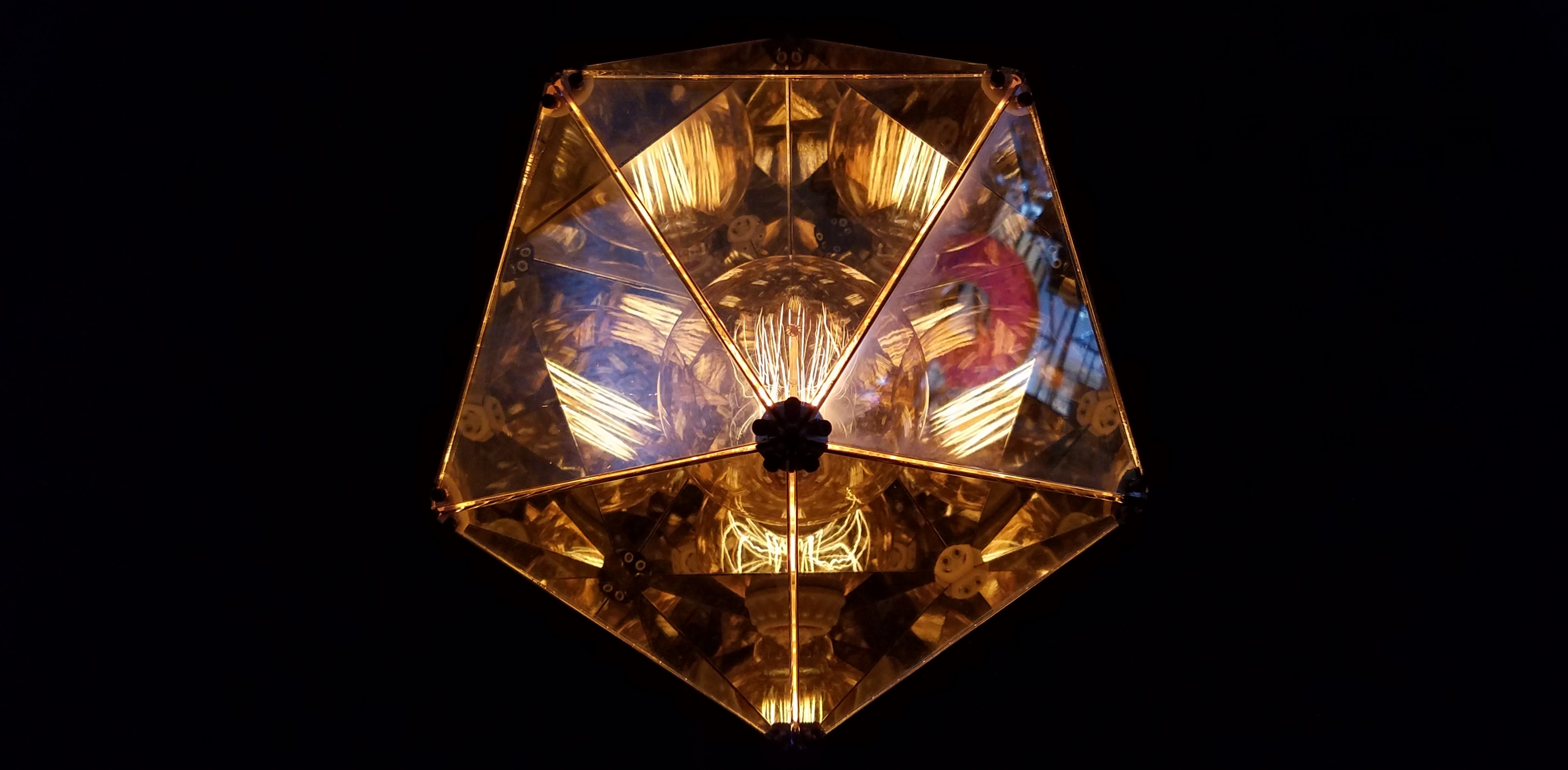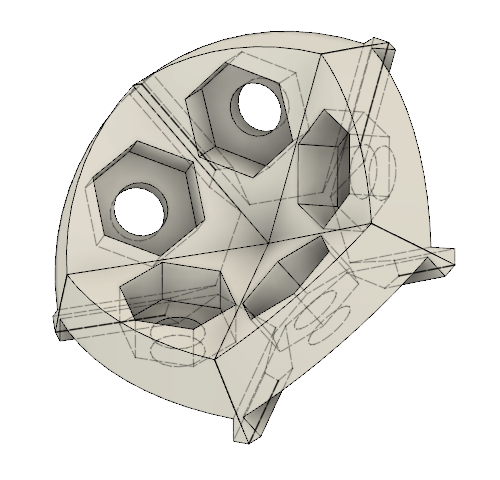Project Report: Mirror Lamp

I’m really happy with the final product! In my opinion the “infinity mirror” effect looks even better in person.
For this project I purchased the light bulb, light bulb holder, and one-way mirrored acrylic. The other tools and materials are available at NYC Resistor.
- Materials:
- ¼” one-way (aka two-way) mirrored acrylic ($60)
- 1 × fancy light bulb ($20)
- 1 × light bulb holder and lamp cord ($10)
- ~30 grams of 3D printer filament ($3)
- 30 × M3 nuts and M3x6 bolts ($1)
- Tools:
- Laser cutter ($5 in laser time)
- 3D printer
- Allen wrench
- File or sandpaper
Parts
Faces
The faces are laser cut from mirrored acrylic (one sheet of 18”×24” and another 12”×18”). There is a small fillet on each corner to avoid uncomfortably sharp corners.
To protect the mirror coating remove the protective coating only from the non-mirror side. Laser the acrylic with the non-mirror side up. The bolt holes are cut before the outside edge to keep the hole placement accurate.
The acrylic is over half the materials cost. Using clear acrylic and a roll of one-way mirror mylar sold as a window tint is significantly cheaper (~$15 for the acrylic and $5 for the mylar). Unfortunately, I had trouble applying it cleanly and the mirror quality doesn’t seem as good.
Lamp
The light bulb holder and lamp cord are available at a few local shops in NYC. The specific light bulb holder is made of two pieces that screw together. Using an existing face I cut an appropriately sized hole, then I sandwiched the unique face between the light bulb holder pieces.
Vertices

The vertices are modelled to hold both the face and M3 nuts. Using nuts allows for easy disassembly and reassembly of the lamp. Getting a pressure fit for the nuts requires experimentation. I made a few prints with different tolerances for the nut hole until I found a value that worked well with the printer and slicer I used. The print quality wasn’t perfect so I used a file to get rid of filament hairs and bumps.
Another option is to thread the bolt directly into a 3D printed hole. However, that does not stand up well to repeated use and isn’t as secure as a nut.
Assembly
I assembled from the bottom face with the bulb and went up. The mirror coating is on the inside to protect against damage when handling the lamp. Some fingerprints got on the faces during assembly, gentle use of lens cloth cleaned everything up. Wearing gloves could have made that unnecessary.
There is a small lip between the faces to make face alignment precise and allow airflow. These airflow gaps are sufficient to keep the lamp cool despite the heat generated by the bulb.
Resources
- Similar corner piece generator by Trammell